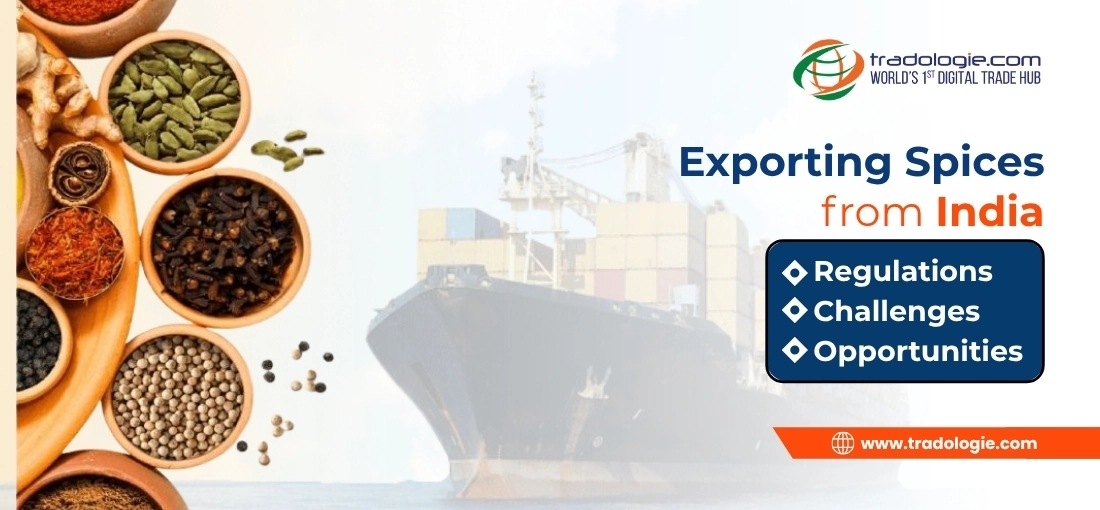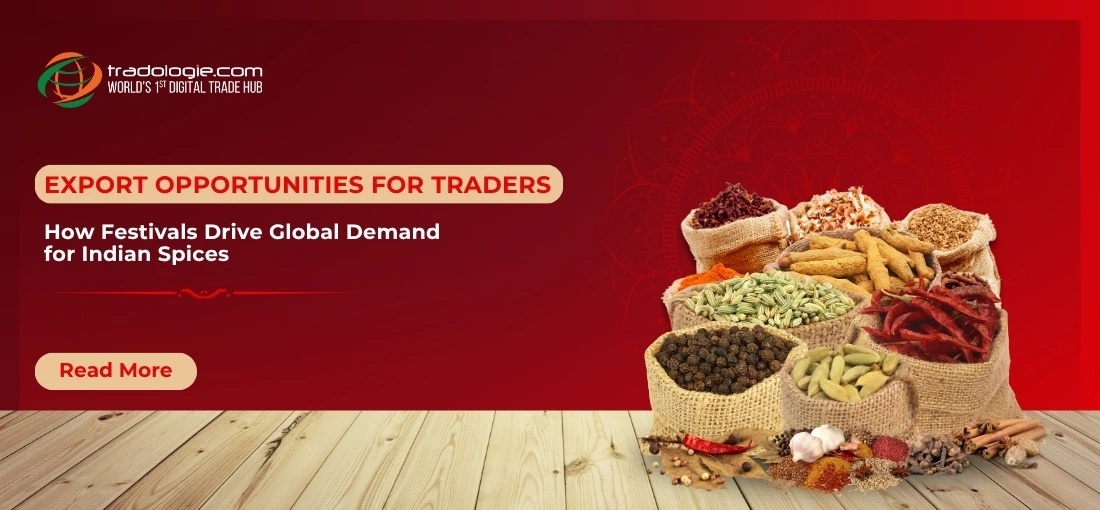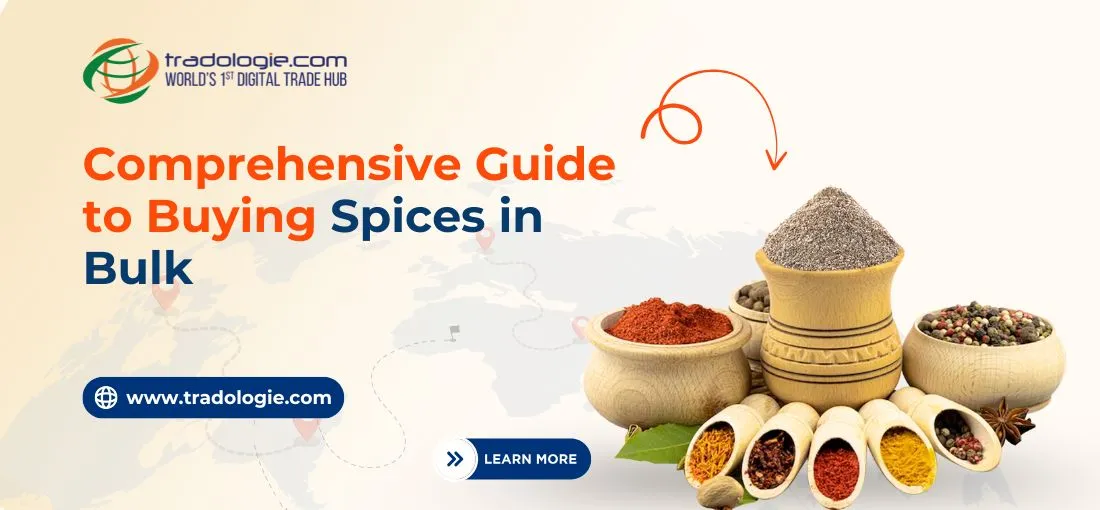Exporting Spices From India: Regulations, Challenges & Opportunities
India, a hub of spices production, has long held a dominant position in the global spice trade industry. It magnificently accounts for a significant share of exports across key products like chilli, turmeric, cumin, and coriander. However, as international trade standards evolve, the spices exporters are no longer just confined to volume or competitive pricing. It now to a large extent depends on regulatory compliance, quality assurance, logistics efficiency, and market adaptability.
From a B2B perspective, exporting spices today is not just about moving goods across borders — it is about aligning with a complex global trade ecosystem that demands consistency, traceability, and responsiveness to regulatory and market shifts.
What Do Statistics Tell?
India's spice export data for the financial year 23-24 highlights a dynamic and interesting shift in commodity exports across categories. These figures are important to look at if you are spices exporters as they provide an interesting trend in the global market. Chilli exports led the basket with USD 1.5 billion worth of exports and showcased strong year-on-year growth from USD 1.31 billion. This fortifies its position as a high-volume and globally demanded spice.
Cumin saw a sharp rise to USD 700 million from USD 522 million worth of exports and signalled a significantly increased preference for Indian cumin among bulk buyers.Turmeric, coriander, and curry powders also registered incremental gains.
However, large cardamom exports saw a dramatic fall from USD 1.71 billion to just USD 18 million and highlighted potential issues in production, compliance, or trade access.
A Shifting Global Landscape
The global spice trade is experiencing strategic realignments. India is still a critical player and exports a large chunk of spices. However, the increasing regulatory compliances in major importing regions like the EU and North America have forced exporters to recalibrate their approach. The recent rejection of Indian spice consignments from brands due to ethylene oxide contamination, as per a report published by Reuters in May 2024, has placed greater emphasis on testing protocols and quality control systems.
This important development highlights a key inflexion point in the industry which is buyers are no longer sourcing purely on origin reputation or pricing. They are increasingly prioritizing partners that have a proven compliance infrastructure, lab-verified traceability, and the capacity to meet custom labelling, packaging, and safety norms.
Regulatory Infrastructure: A Non-Negotiable Pillar
Exporting food-grade commodities such as spices demands compliance with both domestic and international standards. This process is majorly regulated through the Spices Board, APEDA, and FSSAI in India. Each authority plays a specific role in ensuring export readiness.
However, certifications alone are not enough. For access to advanced markets such as the United States and the EU, exporters must meet import-specific mandates. These common certifications include US FDA registration, EU pesticide residue limits, and organic or fair-trade certifications depending on buyer preferences. Failure to meet these standards can lead to detention at ports, financial losses, and long-term reputational damage.
Importers today expect exporters to offer more than compliant documentation — they expect real-time traceability, batch-wise lab reports, and proof of post-harvest hygiene protocols. In short, documentation must align with commercial expectations, not just regulatory requirements.
Operational Risks: Delays, Contamination & Currency Volatility
While India's production ecosystem is robust, the export process is increasingly constrained by a number of operational risks.
Delayed shipments which are often caused by port congestion, customs bottlenecks, or poor internal coordination between shippers and CHAsare a critical concern for institutional buyers who operate on just-in-time procurement cycles. In orders that are time-sensitive and involve premium spice consignments (like green cardamom or nutmeg), even minor delays can affect downstream production schedules for bulk spices importers in food processing or FMCG sectors.
Another consistent issue is pest infestation and contamination. Spices being hygroscopic in nature are highly susceptible to quality deterioration if not properly processed, packed, and stored. Non-compliance with storage protocols, temperature sensitivity, and fumigation standards can result in post-shipment rejections, even if the origin quality was sound.
Add to this the risk of currency volatility — with INR/USD and INR/EUR fluctuations now impacting margins — and exporters must now factor in hedging instruments or structured pricing models (e.g., contracts based on forward exchange rates) to protect financial outcomes.
The Role of Packaging and Labeling in Contract Fulfilment
In many cases, B2B contracts are held up not by product quality but by non-conformity in packaging or labeling standards. Regulations vary drastically by region. What is acceptable in a GCC market may be non-compliant under EU food labeling rules.
For bulk spices importers— especially supermarkets, ingredient manufacturers, and institutional distributors — consistency in packaging formats (e.g., food-grade LDPE, tamper-proof cartons), labeling clarity (batch numbers, allergen warnings), and traceability codes are non-negotiable. Exporters that fail to integrate this into their workflow risk not just shipment returns, but long-term exclusion from preferred vendor lists.
Looking Ahead: Opportunities Amid Regulation
Despite these complexities, the spice export business remains structurally sound and commercially attractive. With India’s domestic spice sector forecasted to grow significantly through 2033, as per Research and Markets (2025), there is clear headroom for scaling exports — particularly in processed and value-added formats like blended masalas, organic SKUs, and foodservice packs.
Moreover, new destination markets — including Southeast Asia, Eastern Europe, and Africa — are now sourcing more actively from India, particularly for competitively priced SKUs that still meet core safety and labeling criteria. The emphasis here is less on regulatory perfection and more on supply reliability and product consistency.
Digital trade platforms like Tradologie are also playing a key role in reshaping B2B sourcing behaviors. Instead of relying entirely on trade expos or legacy networks, institutional buyers are leveraging transactional interfaces that offer pre-verified suppliers, integrated inspection support, and comparative pricing — streamlining the procurement cycle while maintaining quality thresholds.
Conclusion: The Future of Indian Spice Exports Lies in Compliance-Driven Agility
For Indian spice exporters, the imperative is clear — align rigorously with global compliance, adopt digitized supply chain practices, and build relationships through data-backed reliability. The global demand for Indian spices remains strong, but the gate to international markets is now controlled not just by origin advantage, but by operational credibility.
Those who adapt to this compliance-first, agility-driven export environment will not only retain market access but also gain pricing power and preferred-supplier status in an increasingly scrutinized global food trade system.





